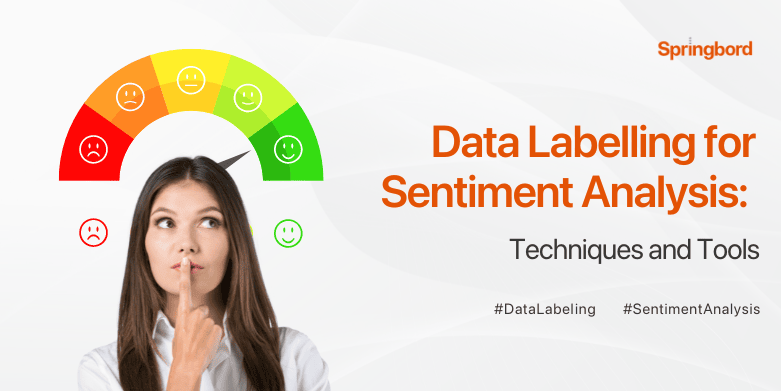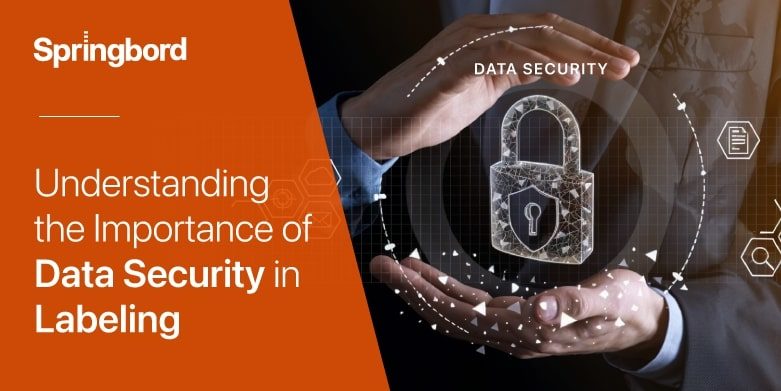Accurate and trustworthy data has become essential in today’s data-driven world. Organizations are constantly striving to extract meaningful insights from vast amounts of information to make informed decisions and stay ahead of the competition.
Two critical processes that contribute to effective data utilization are data labeling and data annotation.
Understanding the differences between these two techniques is key to leveraging their benefits and maximizing business growth.
Introduction:
Maximizing business potential through effective data utilization is crucial in today’s data-driven landscape. Accurate and reliable data play a pivotal role in facilitating successful business operations and informed decision-making. To extract meaningful insights and unleash the full power of data, organizations often rely on two essential processes: data labeling and data annotation.
In this blog, we will delve into the nuances between data labeling and data annotation, shedding light on their respective definitions, purposes, techniques, challenges, and advantages.
Furthermore, we will advocate for the benefits of outsourcing these tasks to specialized service providers, highlighting how it can drive business growth and efficiency.
I. Understanding Data Labeling:
A. Definition and Purpose:
Data labeling is the process of attaching meaningful and descriptive labels to raw data, enabling the data to be categorized and analyzed effectively.
It plays a crucial role in data-driven decision-making, as labeled data forms the foundation for training machine learning models and extracting valuable insights. The primary objectives of data labeling are to enhance data quality, improve model accuracy, and facilitate the extraction of relevant information.
B. Methods and Techniques:
Data labeling can be accomplished through manual or automated techniques. Manual data labeling involves human annotators reviewing and labeling data according to predefined guidelines.
This method allows for subjective and context-dependent labels, making it suitable for complex tasks that require human judgment.
Automated data labeling techniques, on the other hand, utilize algorithms and predefined rules to label data in a faster and more scalable manner. Examples of commonly used data labeling methods include text categorization, object recognition, sentiment analysis, and image segmentation.
C. Challenges and Limitations:
Data labeling processes face several challenges. One of the main challenges is the potential for subjective interpretations and inconsistencies in manual labeling, which can introduce biases into the labeled dataset.
Additionally, scalability is a concern when dealing with large volumes of data that need to be labeled within tight timelines.
Moreover, domain expertise is often required for accurate labeling, especially in specialized fields where knowledge of specific industry terminology or context is necessary.
D. Benefits of Outsourcing Data Labeling:
Outsourcing data labeling brings several advantages to businesses:
- Cost-effectiveness and resource optimization: Outsourcing data labeling allows companies to focus on their core competencies while reducing costs associated with building and maintaining an in-house labeling team.
- Access to specialized talent and domain expertise: Outsourcing provides access to a pool of skilled data labeling professionals who possess expertise in various domains. This ensures accurate and high-quality labeling for specific industry requirements.
- Enhanced accuracy and quality control measures: Outsourcing partners often have robust quality control processes in place to ensure consistent and accurate labeling. This results in improved data quality and more reliable model training.
- Flexibility and scalability for evolving business needs: External data labeling services offer flexibility to scale up or down based on the volume and complexity of labeling requirements. This agility enables businesses to adapt quickly to changing market demands and project scopes.
II. Unveiling Data Annotation:
A. Definition and Scope:
Data annotation involves the process of marking or annotating data with specific attributes or features to train machine learning models.
It plays a critical role in supervised learning, where annotated data acts as a reference for the model to learn patterns and make predictions.
Accurate and comprehensive annotations are essential for ensuring the model’s performance and generalizability to real-world scenarios.
B. Techniques and Tools:
Various data annotation techniques are employed, depending on the type of data and the specific task. For image and video data, techniques such as bounding boxes, polygon segmentation, and keypoint annotations are commonly used.
Text data can be annotated for sentiment, named entities, or parts of speech.
Numerous annotation tools and platforms, such as Labelbox, RectLabel, and VGG Image Annotator (VIA), are available to streamline the annotation workflow, improve efficiency, and maintain consistency.
C. Complexities and Considerations:
Data annotation can be a complex task due to several challenges.
Ambiguity and subjectivity in labeling guidelines can lead to inconsistent annotations, impacting model performance. Expert annotators with domain knowledge are often required to handle specialized tasks that demand contextual understanding.
Quality control processes, such as inter-annotator agreement and regular feedback loops, are necessary to ensure consistency and reduce errors.
D. Advantages of Outsourcing Data Annotation:
Outsourcing data annotation offers several benefits:
- Leveraging specialized skills and expertise: External annotation service providers employ annotators with expertise in different domains, ensuring accurate and precise annotations aligned with specific business needs.
- Minimizing bias and improving model performance: Outsourcing annotation to a diverse team helps mitigate bias in labeled datasets, leading to fairer and more reliable models that perform well across various demographics and use cases.
- Mitigating annotation complexities and ensuring consistency: Professional annotation teams have experience in handling complex annotation tasks and maintaining annotation guidelines consistently. This reduces errors and enhances the overall quality of the annotated dataset.
- Streamlining the annotation workflow for faster turnaround times: Outsourcing partners often have efficient annotation workflows, utilizing robust annotation tools and platforms. This enables faster annotation turnaround times while maintaining accuracy and quality.
By understanding the difference between data labeling and data annotation and the benefits of outsourcing these processes, businesses can make informed decisions to optimize their data-driven strategies.
Outsourcing data labeling and annotation not only provides cost-effectiveness and access to specialized talent but also ensures accurate and high-quality labeled data, leading to improved model performance and faster time-to-insights.
III. Comparing Data Labeling and Data Annotation:
A. Key Differences in Objectives and Applications:
Data labeling and data annotation are both essential processes in preparing training data for machine learning algorithms. However, they serve distinct purposes and find applications in different domains.
Data labeling involves the process of assigning predefined labels or tags to specific data points. It focuses on categorizing or classifying data based on predetermined criteria. For instance, in the context of image recognition, data labeling involves identifying and labeling objects or regions of interest within an image, such as identifying and labeling different objects like cars, trees, or people.
On the other hand, data annotation goes beyond simple categorization and involves adding more detailed and contextually rich information to the data. It may include tasks like drawing bounding boxes around objects of interest, outlining semantic segments, or capturing more nuanced attributes within the data. In the case of image annotation, it could involve outlining the boundaries of each object within an image and providing additional attributes like the object’s size, shape, or color.
The domains where each technique is typically utilized may vary. Data labeling is commonly used in applications such as sentiment analysis, text classification, and categorization. Data annotation, with its ability to provide richer context, is often employed in computer vision tasks like object detection, image segmentation, and autonomous driving systems.
B. Skill Requirements and Expertise:
Effective data labeling requires individuals with a strong understanding of the predefined labels or categories used in the project. They need to be proficient in applying these labels accurately and consistently to the data. While domain knowledge can be advantageous, data labeling often relies on clear guidelines and instructions to ensure consistency across different annotators.
Data annotation, on the other hand, demands a higher level of expertise. Annotators need to understand the specific context of the data and apply more nuanced annotations. For example, annotating medical images for tumor detection would require a deeper understanding of medical terminology and anatomy. Annotators need to possess the expertise to capture fine-grained details and attributes relevant to the task at hand.
C. Time and Resource Considerations:
In-house data labeling and annotation can be time-consuming and resource-intensive. Companies must allocate internal resources, such as data scientists or subject matter experts, to oversee and manage the annotation process. This diversion of resources from core business activities can hinder productivity and slow down project timelines.
Outsourcing data labeling and annotation to dedicated service providers can offer significant advantages in terms of time and resource efficiency. These service providers specialize in data preparation tasks, employing skilled annotators who are trained in specific domains. By outsourcing, companies can offload the burden of annotation and free up internal resources to focus on their core competencies.
D. Quality Assurance and Cost Efficiency:
Ensuring data quality and accuracy is crucial for training robust machine learning models. Both data labeling and data annotation processes require robust quality control measures to minimize errors and inconsistencies.
In data labeling, quality control involves establishing clear annotation guidelines, providing continuous feedback to annotators, and conducting regular reviews to maintain consistency and accuracy. For data annotation, additional steps may include inter-annotator agreement checks and verification by domain experts to ensure annotations meet high-quality standards.
Outsourcing data labeling and annotation can offer cost-effective solutions. By partnering with external service providers, companies can benefit from economies of scale and access a pool of skilled annotators. Outsourcing eliminates the need to invest in infrastructure, tools, and continuous training, allowing businesses to meet their budgetary goals more efficiently.
IV. Why Outsource Data Labeling and Data Annotation:
A. Focus on Core Competencies:
By outsourcing data labeling and annotation, business owners can redirect their focus toward core business activities. Instead of allocating resources and time to data preparation tasks, companies can leverage the expertise of specialized service providers.
This enables them to concentrate on strategic decision-making, product development, and customer engagement, ultimately driving business growth.
B. Cost and Resource Optimization:
Outsourcing data labeling and annotation reduces overhead costs associated with setting up and maintaining an in-house annotation team. External service providers offer flexible pricing models based on project requirements, allowing businesses to optimize their resource allocation.
Additionally, outsourcing provides scalability, enabling companies to handle large volumes of data and fluctuating workloads without straining their internal resources.
C. Enhanced Accuracy and Quality:
External service providers in data labeling and annotation prioritize accuracy and quality. Their experienced annotators follow stringent quality control processes, ensuring consistent and reliable annotations.
By leveraging the expertise of these professionals, companies can expect higher-quality training data, leading to more accurate machine learning models and improved business outcomes.
D. Future-proofing Business Operations:
Data requirements and technological advancements are constantly evolving. By outsourcing data labeling and annotation, businesses can future-proof their operations.
External service providers stay up to date with the latest techniques, tools, and industry best practices, enabling companies to adapt to changing needs and leverage emerging technologies effectively. Outsourcing fosters adaptability, innovation, and a competitive edge in the rapidly evolving business landscape.
Conclusion
Data labeling and data annotation are vital processes in the realm of data-driven decision-making and machine learning model training. While they share similarities in their objectives, methods, and challenges, their distinct purposes and applications set them apart.
By outsourcing these tasks to specialized service providers, businesses can reap numerous benefits, including cost-effectiveness, access to specialized talent, enhanced accuracy, and flexibility. To unlock the full potential of your business, it’s time to embrace the outsourcing trend and leverage the expertise of dedicated professionals in data labeling and data annotation.
Embrace the outsourcing trend and unlock the full potential of your business through data labeling and data annotation. Contact Springbord, your trusted provider, to discuss how we can assist you in efficiently managing your data and driving business growth.







